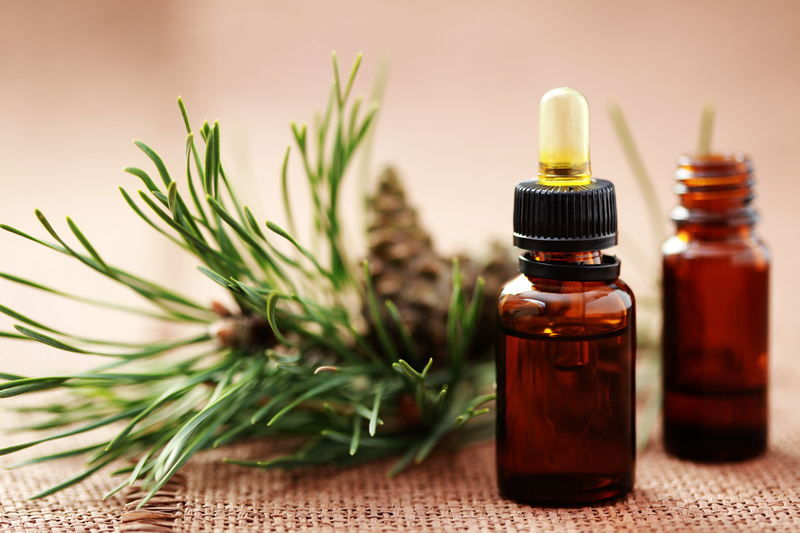Say Goodbye to Mouldy Window Sills with These Steps
Posted on 06/09/2025
Say Goodbye to Mouldy Window Sills with These Steps
Mouldy window sills can quickly turn a clean, beautiful home into an unhealthy environment. Not only are patches of mould unsightly and unpleasant, but they can also contribute to respiratory issues and other health problems for your household. The good news? You can fight back against mould growth on your window sills and reclaim your home's freshness! In this article, we'll walk you through easy, effective steps to eliminate and prevent mouldy window sills once and for all. Whether you're dealing with mild discolouration or a full-blown black mould infestation, these step-by-step solutions will help you achieve long-lasting results.
Why Mould Grows on Window Sills
Before learning how to get rid of mould on window sills, it's important to understand why it occurs. Mould is a type of fungus that thrives in moist, humid environments. Window sills often become prime hotspots for mould growth due to:
- Condensation: When warm indoor air meets colder window surfaces, water droplets form and dampen the sill.
- Poor ventilation: Stagnant air around windows prevents moisture from evaporating efficiently.
- Leaky windows: Inadequate seals or cracks in window frames let rainwater or outdoor moisture seep in, promoting mould formation.
- Dust buildup: Windowsills collect dust, dirt, and organic debris -- a food source for mould spores to thrive.
- Lack of sunlight: Rooms with little natural light can stay damp and encourage mould to take hold.
Mouldy window sills aren't just an aesthetic concern. Some mould types -- like black mould (Stachybotrys chartarum) -- produce allergens and toxic compounds that can irritate skin, trigger allergies, or even cause long-term respiratory issues. That's why it's crucial to address mould growth promptly.

Identifying and Assessing Mould Growth on Window Sills
Mould can look different depending on its species and the materials of your window frame or sill. It's commonly:
- Black, green, or brown in color
- Fuzzy, slimy, or powdery in texture
- Accompanied by a musty, earthy smell
Inspect your window sills closely. Look for any discolouration, damp spots, or peeling paint. Use a flashlight to check behind curtains and around the edges where mould might lurk out of sight. Be sure to inspect multiple windows, as the problem can be more widespread than it first appears.
Essential Safety Precautions Before Cleaning Window Sill Mould
Never underestimate the health risks of handling mould! Before starting any cleaning, keep these precautions in mind:
- Wear gloves (rubber or nitrile) to protect your skin.
- Use a face mask or respirator to avoid inhaling spores.
- Open windows for proper ventilation whenever possible.
- Keep children and pets away from the affected area until it's cleaned.
For very large, persistent, or toxic mould infestations (covering over 1 square meter or showing repeated regrowth after cleaning), consult a professional mould remediation service.
Step-by-Step Guide: How to Remove Mould from Window Sills
Step 1: Gather Your Cleaning Supplies
- Protective gloves and mask
- Disposable rags or sponges
- Bucket of warm water
- Non-ammonia soap or detergent
- White vinegar or hydrogen peroxide (for natural cleaning)
- Household bleach (for stubborn mould)
- Spray bottle
- Old toothbrush or soft scrubbing brush
- Paper towels or old towels for drying
Step 2: Prepare the Area
- Open nearby windows, if safe, to increase airflow.
- Take down curtains or blinds that could get in the way or harbour mould.
- Lay towels on the floor to catch drips or falling mould particles.
Step 3: Remove Surface Mould
- Dampen a rag with soapy water (water + mild detergent), and gently wipe affected areas to loosen surface spores.
- Be gentle to avoid releasing spores into the air. Don't scrape dry mould off -- always wet affected areas first.
- Dispose of contaminated rags in a sealed plastic bag immediately after use.
Step 4: Disinfect the Area
- For natural cleaning: Mix equal parts white vinegar and water in a spray bottle. Spray generously onto the mouldy sill. Using an old toothbrush, scrub until all residues are gone. For particularly stubborn spots, let the vinegar sit for at least 30 minutes before scrubbing.
- For chemical cleaning: Mix one part bleach to three parts water. Apply with a spray bottle or sponge. Never mix bleach with ammonia-based cleaners, as this creates deadly fumes!
- Wipe away cleaning solution with a clean damp cloth. Repeat if necessary until the window sill is completely clean.
Step 5: Dry Thoroughly
- Use a towel or kitchen roll to dry the area as thoroughly as possible -- mould needs moisture to return!
- If possible, run a small fan near the cleaned sill or leave the window open on dry, sunny days to speed up drying.
Step 6: Prevent the Return of Mould
*Congratulations!* You've learned how to clean mouldy window sills. Now, let's keep them mould-free with these ongoing prevention tips:
- Wipe condensation: Each morning in colder months, quickly wipe window sills and glass with a dry cloth to remove any condensation.
- Increase ventilation: Use extractor fans in kitchens and bathrooms and open windows briefly for air exchange, especially after cooking or showering.
- Invest in a dehumidifier: Especially useful if you live in a damp climate or have high indoor humidity.
- Check seals and caulking: Examine the outside and inside of windows for cracks, gaps, or deteriorated caulking. Repair or replace to block moisture entry.
- Remove dust regularly: Keep window sills clear of dust, dirt, and debris -- a quick weekly wipe-down can work wonders.
- Use mould-inhibiting paint: Consider repainting sills with a specialist anti-mould or mildew-resistant paint for extra protection.
- Let in the light: Sunlight is a natural mould deterrent, so leave windows uncovered when possible.
Natural Versus Chemical Solutions for Cleaning Mouldy Window Sills
There's ongoing debate about whether natural products (like vinegar or hydrogen peroxide) are as effective as commercial mould removal chemicals. Here are the facts:
- White vinegar: An excellent, non-toxic choice for light to moderate mould. It kills up to 82% of mould species and is safe for most surfaces.
- Baking soda: Can be mixed with water into a paste for gentle scrubbing tool; also helps deodorize musty odours.
- Hydrogen peroxide (3%): A powerful disinfectant, safe for many surfaces, and effective at killing and bleaching light mould stains.
- Bleach: Works rapidly to kill most surface mould, but is caustic and should only be used in well-ventilated areas. Not always effective at penetrating porous surfaces like wood.
- Commercial sprays: Formulated for tough or persistent problems but may contain harsh chemicals; always read labels and follow safety instructions.
Whichever method you choose, consistency is key. If you spot recurring mould, reassess your home's airflow and humidity levels.
Preventing Mouldy Window Sills in Humid or Wet Climates
Living in a region with lots of rain or humidity? The risk of mouldy window sills rises dramatically. Here are extra measures you can take:
- Run dehumidifiers regularly: Aim to keep indoor humidity below 60%.
- Clear clogged gutters and downpipes: Overflowing water can seep into window frames and sills.
- Trim back plants near windows: Overgrown shrubs and trees create shade and trap moisture against exterior walls.
- Install window vents: Trickle vents allow fresh air to circulate, even when windows are shut.
- Regular exterior inspections: Schedule seasonal checks for exterior window seals, frame damage, and nearby roof flashing issues.
When to Call a Professional for Mouldy Window Sills
While most mouldy window sill problems can be handled with DIY cleaning, there are situations where expert help is needed:
- Mould covers an area larger than 1 square meter
- You or your family have respiratory conditions or severe allergies
- Mould reappears within weeks after cleaning
- The window sill material (especially wood) seems deeply rotted, stained, or structurally compromised
- You notice mould spreading to adjacent walls, carpets, or ceilings
Professional mould remediation specialists can assess the underlying causes, introduce industrial drying equipment, and advise on repairs or replacements if necessary.

Commonly Asked Questions About Mouldy Window Sills
How often should I check my window sills for mould?
It's a good idea to inspect frequently -- at least once a month, and more often during wet seasons or after heavy storms. Catching mould early prevents a minor problem from becoming a household hazard.
Can mouldy window sills cause health problems?
Yes. Exposure to certain moulds can cause allergy symptoms, worsen asthma, and increase the risk of respiratory infections. If anyone in your home is experiencing unexplained symptoms, check your environment for possible culprits like mouldy window sills.
Is repainting enough to fix a mouldy window sill?
No -- painting over mould simply hides the problem and can make it worse. Always clean and treat mould thoroughly before repainting, ideally with a mould-resistant paint or primer.
Final Thoughts: A Mould-Free Home is a Healthy Home
Dealing with mouldy window sills might seem like a hassle, but with the right knowledge and tools, you can say goodbye to mould growth for good. Regular maintenance, vigilance, and a few sensible preventive measures will keep your home both beautiful and healthy for years to come.
Remember: Address moisture, clean regularly, and let sunlight in whenever possible. Your window sills -- and your lungs -- will thank you!
If you found this guide helpful, share it with others who might also be looking for ways to say goodbye to mouldy window sills. A clean, mould-free living space is within everyone's reach!



